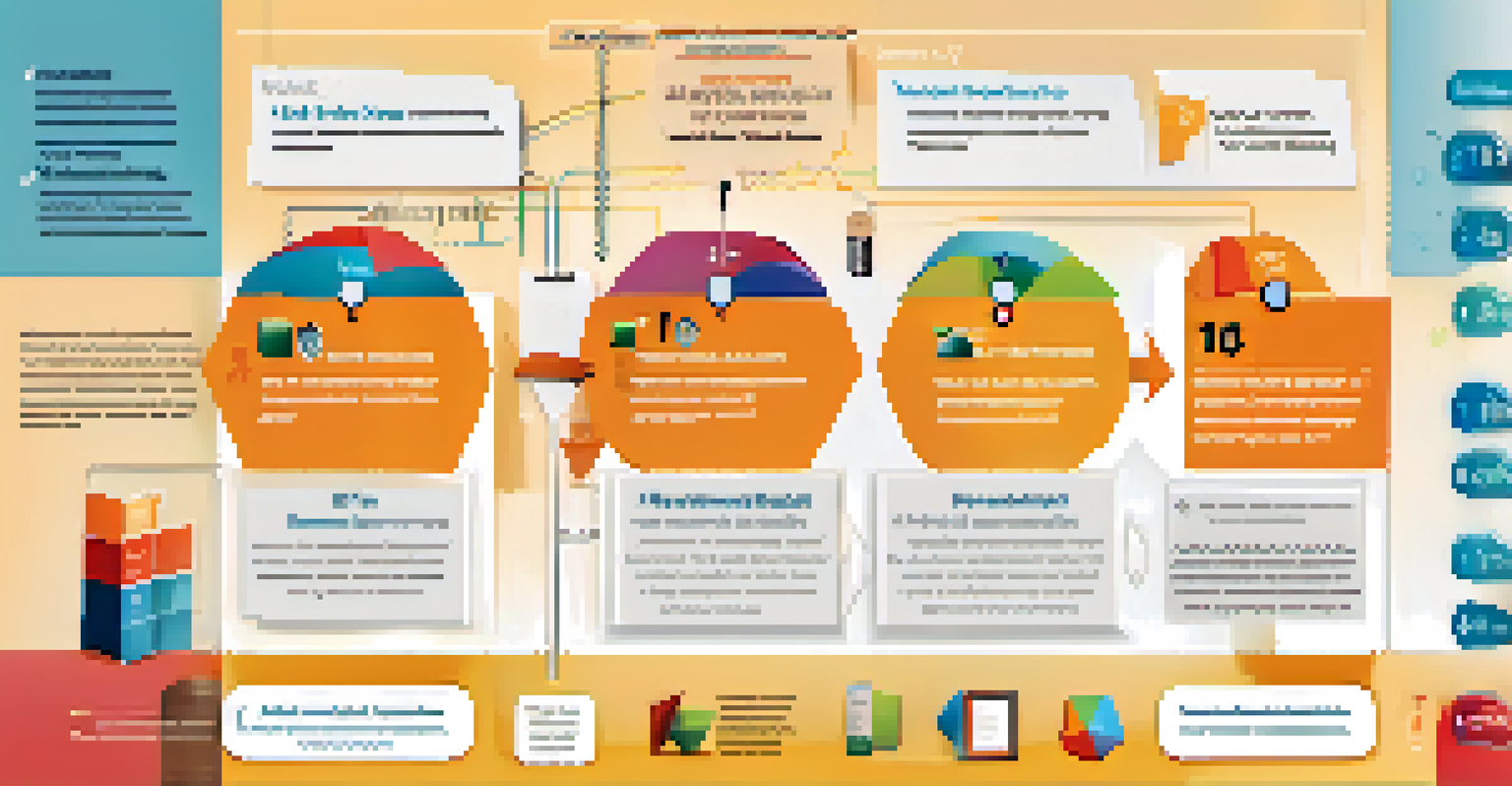Using Data-Driven Instruction in Digital Learning Spaces

Understanding Data-Driven Instruction and Its Importance
Data-driven instruction involves using data to inform teaching methods and strategies. In today’s digital learning spaces, this approach allows educators to tailor their lessons to meet individual student needs more effectively. By analyzing assessment results and engagement metrics, teachers can identify areas where students struggle and adjust their instruction accordingly.
Data is the new oil. It’s valuable, but if unrefined it cannot really be used.
For example, a teacher might notice that a significant number of students are performing poorly on a specific topic through quiz results. Instead of sticking to the original lesson plan, they can revisit the material, providing targeted resources and activities to help students grasp the concept. This adaptability is one of the key benefits of incorporating data into the instructional process.
Ultimately, using data-driven instruction not only enhances student learning outcomes but also fosters a more personalized educational experience. When students feel that their unique learning patterns are being recognized and addressed, their motivation and engagement levels can increase significantly.
Collecting Relevant Data in Digital Learning Environments
The first step in data-driven instruction is collecting relevant data that reflects student performance and engagement. In digital learning spaces, various tools and platforms can automatically gather this information, from online assessments to learning management systems. These tools provide educators with real-time insights into student progress and participation.

For instance, a platform like Google Classroom can track assignment submissions and participation in discussions, offering a wealth of data to analyze. Teachers can look at patterns such as which assignments are frequently turned in late or which topics spark the most discussion. This data can guide educators in adjusting their teaching methods to better meet students' needs.
Data-Driven Instruction Enhances Learning
Using data to inform teaching allows educators to tailor lessons to meet individual student needs, ultimately improving learning outcomes.
In short, effective data collection is crucial for understanding how students learn in digital environments. By leveraging technology to gather and analyze data, educators can gain valuable insights that help refine their instructional strategies and enhance overall learning experiences.
Utilizing Data to Inform Instructional Strategies
Once data is collected, the next step is to utilize it to inform instructional strategies. This involves analyzing the data to draw meaningful conclusions about student learning and performance. Educators can look for trends and patterns that indicate areas of strength and weakness, allowing them to make informed decisions about how to tailor their instruction.
Without data, you’re just another person with an opinion.
For example, if data shows that students excel in collaborative projects but struggle with individual assessments, a teacher might focus on integrating more group work into the curriculum. This not only addresses students' learning preferences but can also help bolster their confidence in areas where they feel less competent.
By continuously revisiting and analyzing data, educators can create a dynamic classroom environment that evolves alongside their students’ needs. This responsive approach is key to enhancing the effectiveness of digital learning spaces, ensuring that instruction remains relevant and impactful.
Creating Personalized Learning Paths with Data
One of the most significant advantages of data-driven instruction is the ability to create personalized learning paths for students. By analyzing data, educators can identify individual learning styles, strengths, and areas for improvement. This information allows them to customize content and resources, ensuring that every student receives support tailored to their specific needs.
For instance, an online learning platform might suggest different resources to students based on their performance on quizzes. A student who struggles with math concepts might receive additional practice problems and video tutorials, while another student who excels might be directed to more challenging material. This level of personalization not only boosts understanding but also keeps students engaged.
Personalized Learning Paths Boost Engagement
Data analysis enables the creation of personalized learning paths, which cater to students' unique strengths and areas for improvement.
Moreover, personalized learning paths can foster a sense of ownership over one’s education. When students see that their unique learning journey is being recognized and supported, they are more likely to take initiative and become active participants in their learning process.
Monitoring Progress and Adjusting Instruction Accordingly
Monitoring student progress is an ongoing process in data-driven instruction. Educators must regularly check in on how students are responding to various instructional strategies and adjust their methods as necessary. This might mean tweaking lesson plans, providing additional resources, or even changing assessment formats to better suit student learning.
For example, if a teacher notices that students are consistently struggling with a particular type of question on assessments, they may decide to incorporate more practice in that area. This not only helps students improve but also allows the teacher to refine their instructional strategies based on real-time feedback.
The key takeaway here is that monitoring progress is not a one-time task but a continuous cycle. By being proactive and responsive to student needs, educators can create a more effective learning environment that adapts to the changing dynamics of student performance.
Engaging Students with Data-Driven Feedback
Feedback plays a crucial role in the learning process, and data-driven instruction enhances this aspect significantly. When educators provide feedback based on data, students receive specific insights into their performance, helping them understand their strengths and areas for improvement. This kind of targeted feedback is much more effective than generic comments.
For instance, a teacher might use data from online quizzes to provide individualized feedback on a student’s performance. Instead of saying, 'You need to improve in math,' the teacher could say, 'You scored lower on geometry questions, so let’s focus on those concepts in our next lesson.' This approach not only clarifies expectations but also empowers students to take ownership of their learning.
Collaboration Enhances Data Utilization
Fostering collaboration among educators through data sharing leads to improved instructional strategies and better student outcomes.
Additionally, by involving students in the feedback process, educators can foster a culture of growth and improvement. When students are encouraged to reflect on their data and set goals based on it, they become more engaged in their own learning journey.
Fostering Collaboration Among Educators and Data Sharing
Collaboration among educators is essential for maximizing the benefits of data-driven instruction. By sharing data and insights with colleagues, teachers can gain new perspectives on effective strategies and practices. This collaborative approach not only enhances individual teaching methods but also contributes to a more cohesive learning environment across the school or district.
For example, a group of teachers might regularly meet to discuss student performance data and share successful instructional strategies. By doing so, they can identify common challenges and brainstorm solutions together, leading to a more unified approach to instruction. This collective effort can significantly improve student outcomes.

Ultimately, fostering a culture of collaboration and data sharing among educators leads to continuous improvement. When teachers work together to analyze and interpret data, they can create a more effective and supportive learning environment for all students.